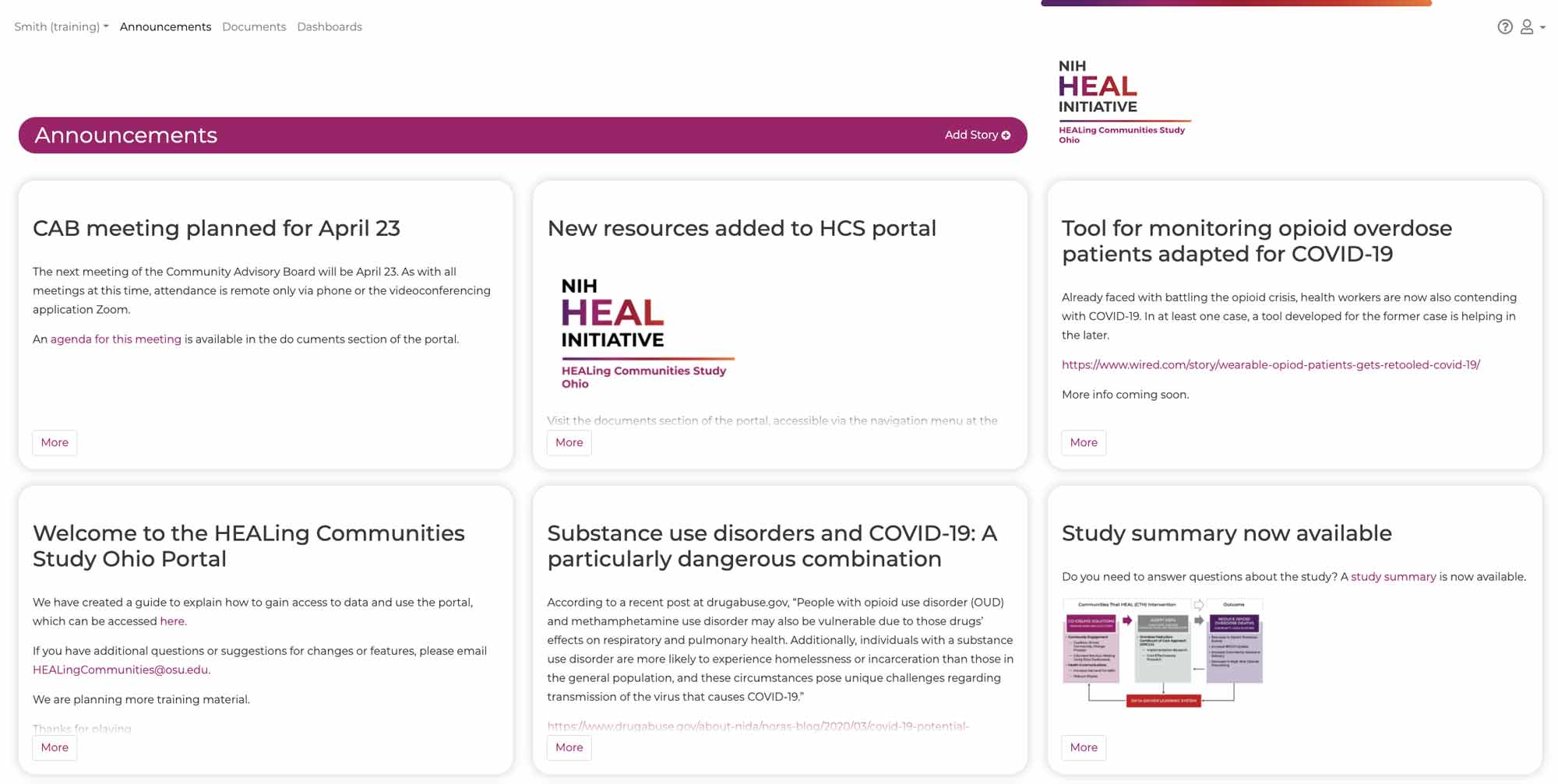What is Portal for Research?
Researchers conducting multi-site collaborative research require a platform to share documents, report metrics, create secure dashboards, and collaborate on other shared artifacts of research. After building a portal for one project (HEALing Communities), College of Medicine Research Information Technology generalized the platform into a framework so that it could be adopted for infinite further projects, saving researchers time and resources.

After developing a portal for researchers on the HEALing Communities Study, RIT extended the same functionality to other projects.
RIT's Approach to a Portal for Research
RIT develops software with an eye toward making it scalable and modular. When fulfilling requests for similar projects, they provide a better user experience to the research team by leveraging prior work to improve on turnaround time. Since many research teams request a portal for communication and document sharing, RIT scaled one solution to work for multiple projects.

Authentication
Collaborators on multi-site studies have unique authentication needs: the portal needed to be able to accept logins from different institutions, while limiting each person's access based on their role in the project. Research IT used the OAuth 2.0 standard protocol to implement a login and permissions system so that protected research components can be accessed and shared securely.

Reusable components
Research projects often involve common infrastructure for shared communication: announcements, document respositories, dashboards, image viewers, PDF viewers. RIT built these components to be used modularly, so that they could be leveraged for future projects. When possible, they used existing frameworks and integrated the software with external resources: the research team used Tableau for data visualizations, so rather than build a custom visualization tool, RIT securely connected the portal for research with Tableau. This allowed researchers to build their visualizations at the same time the software was being developed, so that research didn't stop while developers were working.

Scaling to future projects
Individual pieces of the portal for research were created for HEALing Communities and the NASDC. After receiving repeated requests for the same functionality, RIT strategized to make its code compartmentalized and reusable from project to project. Though each project built using the portal for research has unique specifications, the turnaround time on new features is much faster if a previous group has requested something similar.
Final Deliverable
The initial version of the portal for research took several months to develop, but for each subsequent project, RIT has been able to construct a baseline in a matter of days. Using the portal for research as a foundation allows RIT to hone in on specific customizations other teams need, adding more modular components to the portal as time goes on. The portal is now being used for three concurrent projects, and can be extended to many more.
